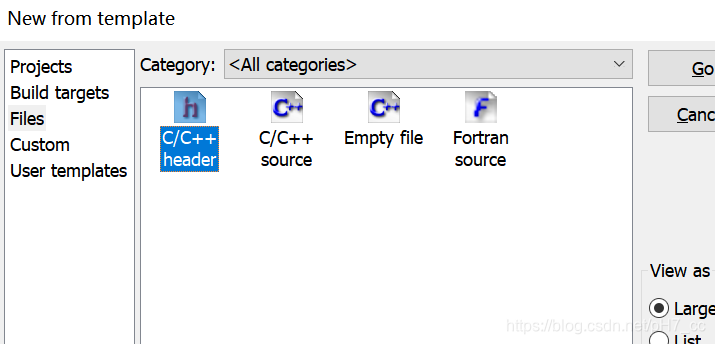“回顾数据结构” 之 选择排序
1. 函数selectionSort
#include <iostream>
using namespace std;
template <typename T> //模板
void selectionSort ( T arr[],int n ){
for( int i = 0 ; i<n ;i++){
//寻找(i,n)区间里的最小值
int minIndex = i ;
for(int j = i + 1 ; j < n ; j++ )
if(arr[j] <= arr[minIndex] )
minIndex = j ;
swap( arr[i] , arr[minIndex]);
}
}
注:1. 使用模板,在主函数中可以使用任意类型的数组
2. 交换函数swap更方便
2. 主函数:
int main()
{
int a[10] = {10,9,8,7,5,4,3,2,1};
selectionSort( a , 10 );
for( int i = 0 ; i < 10 ; i++ )
cout << a[i] << endl;
double b[10] = {10.1,9.5,8.0,7.3,5.0,4.0,3.3,2.4,1.1};
selectionSort( b , 10 );
for( int j = 0 ;j < 10 ; j++ )
cout << b[j] << endl;
return 0;
}
3.头文件
new一个file,选择C++header

自带宏定义:
#ifndef STUDENT_H_INCLUDED
#define STUDENT_H_INCLUDED
定义struct结构体
为什么要运算符重载:如果不重载运算符,则操作对象只能是基本数据类型,不能是自定义类型;则重载之后,对象可以为自定义类型。
重载输入输出运算符用友元函数。
#ifndef STUDENT_H_INCLUDED
#define STUDENT_H_INCLUDED
#include <iostream>
#include <string>
using namespace std;
struct Student{
string name;
int score;
bool operator<(const Student &otherStudent){
//对“<”定义,返回值为bool??
return score !=otherStudent.score?score > otherStudent.score : name < otherStudent.name ;
//将<定义为>,则分数高的排在前面
//判断分数是否不等,若相等,则name小的排在前面
}
friend ostream& operator<<(ostream &os,const Student &student){
os<<"Student: "<<student.name<<" "<<student.score<<endl;
return os;
}
};
#endif // STUDENT_H_INCLUDED
主函数的测试:
Student s[4] = {{"D",90},{"C",96},{"B",80},{"A",80}};
//遇到姓名相同的,打印时按照给值的顺序;改进:在运算符重载时判断姓名
selectionSort( s , 4 );
for( int j = 0 ;j < 4; j++ )
cout << s[j];
//不用和上面一样每输出一个值打印一个空格
//因为对Stuent类的运算符已重载 再添空格是对重载后的结构再添空格
cout << endl;
打印结果:

